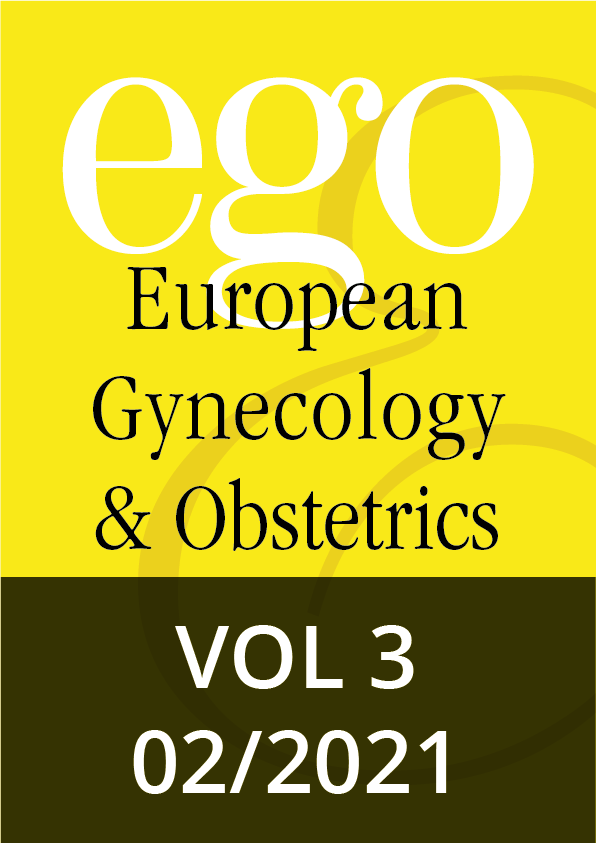Short reviews, 060–062 | DOI: 10.53260/EGO.213021
Systematic review, 063–071 | DOI: 10.53260/EGO.213022
Case reports, 072–075 | DOI: 10.53260/EGO.213023
Case reports, 076–078 | DOI: 10.53260/EGO.213024
Case reports, 079–081 | DOI: 10.53260/EGO.213025
Case reports, 082–085 | DOI: 10.53260/EGO.213026
Original articles, 086–090 | DOI: 10.53260/EGO.213027
Original articles, 091–095 | DOI: 10.53260/EGO.213028
Original articles, 096–099 | DOI: 10.53260/EGO.213029
Original articles, 100–107 | DOI: 10.53260/EGO.2130210
Role of ultrasound features in the conservative management of adnexal torsion followed by spontaneous detorsion in pregnancy
Abstract
Adnexal torsion is one of the few real gynecologic emergencies. It consists of partial or complete rotation of the ovary (on its vascular pedicle) and/or fallopian tube around the infundibulo-pelvic ligament, leading to stromal edema, hemorrhagic infarction and necrosis of the adnexal structures. The incidence of adnexal torsion reported in the literature is 0.3–3.5 cases per year. Up to 20% of torsion cases are diagnosed in pregnant women, with the majority occurring in the first trimester. The clinical presentation is similar in pregnant and non-pregnant women. We report a case of spontaneous adnexal detorsion in a pregnant woman with ovarian torsion in the absence of any underlying functional cyst or previous hormonal stimulation. This is the first case of spontaneous adnexal detorsion in a pregnant woman who has not previously undergone hormonal stimulation. Not only clinical presentation and laboratory tests, but also specific ultrasound features are essential in the diagnosis and subsequent management of adnexal torsion, especially in pregnancy.
Keywords: adnexal torsion, pregnancy, ultrasound.
Citation: Bitonti G.,Rita Palumbo A.,Gallo C.,Venturella R.,Di Carlo C., Role of ultrasound features in the conservative management of adnexal torsion followed by spontaneous detorsion in pregnancy, EGO European Gynecology and Obstetrics (2021); 2021/02:079–081 doi: 10.53260/EGO.213025
Published: May 1, 2021
ISSUE 2021/02

Short reviews, 060–062 | DOI: 10.53260/EGO.213021
Systematic review, 063–071 | DOI: 10.53260/EGO.213022
Case reports, 072–075 | DOI: 10.53260/EGO.213023
Case reports, 076–078 | DOI: 10.53260/EGO.213024
Case reports, 079–081 | DOI: 10.53260/EGO.213025
Case reports, 082–085 | DOI: 10.53260/EGO.213026
Original articles, 086–090 | DOI: 10.53260/EGO.213027
Original articles, 091–095 | DOI: 10.53260/EGO.213028
Original articles, 096–099 | DOI: 10.53260/EGO.213029
Original articles, 100–107 | DOI: 10.53260/EGO.2130210
